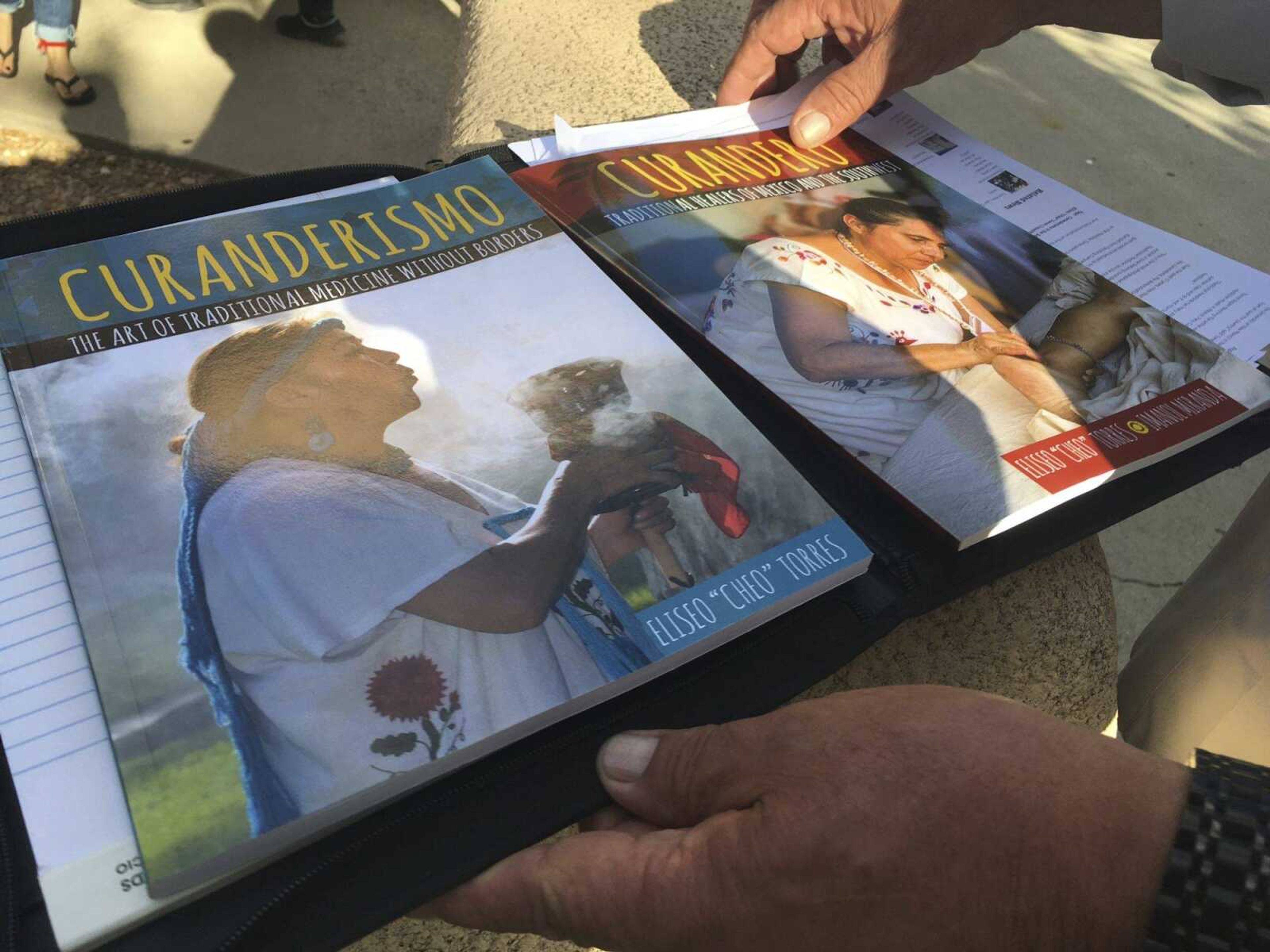Native American healing class sparks unique health textbook
ALBUQUERQUE, N.M. -- Laughter can combat trauma. Spiritual cleansings could be used to fight an opioid addiction. Cactus extract may battle diabetes and obesity. These insights are from curanderismo -- traditional Native American healing from the American Southwest and Latin America...
ALBUQUERQUE, N.M. -- Laughter can combat trauma. Spiritual cleansings could be used to fight an opioid addiction. Cactus extract may battle diabetes and obesity.
These insights are from curanderismo -- traditional Native American healing from the American Southwest and Latin America.
University of New Mexico professor Eliseo "Cheo" Torres' has included these thoughts in a new, unique textbook connected to his internationally known annual course on curanderismo.
"Curanderismo: The Art of Traditional Medicine Without Borders," released last week, coincides with Torres' annual gathering of curandero students and healers around the world at the University of New Mexico. For nearly 20 years, healers and their students have come to Albuquerque to meet and exchange ideas on traditional healing that for many years often were ignored and ridiculed.
Torres, who also is the university's vice president for student affairs, said the popularity of the annual course and a similar online class he teaches convinced him there needed to be a textbook on curanderismo.
"This textbook came out of the experience of this class and the ideas that have been shared through the years," Torres said during a special morning ceremony with Aztec dancers on campus. "From healers in Mexico to those in Africa, many have long traditions of healing that are being rediscovered by a new generation."
Curanderismo is the art of using traditional healing methods such as herbs and plants to treat various ailments. Long practiced in Native American villages of Mexico and other parts of Latin America, curanderos also are found in New Mexico, south Texas, Arizona and California.
Anthropologists believe curanderismo remained popular among poor Latinos because they didn't have access to health care. But they said the field is gaining traction among those who seek to use alternative medicine.
"I believe people are disenchanted with our health system," Torres said. "Some people can't afford it now, and they are looking for other ways to empower themselves to heal."
The textbook gives a survey of medicinal plants used to help digestive systems and how healers draw in laugh therapy to cope with traumatic experiences.
Ricardo Carrillo, a licensed psychologist and a healer based in Oakland, California, said he's seeing younger people look to curanderismo to help with challenges like addiction and physical pain.
"Yes, you have to go through detox and do all that you are supposed to do to get yourself clean," said Carrillo, who came to the Albuquerque workshop to speak. "Curanderismo can give you the spiritual tools to keep yourself clean and look to a higher power."
Among the ailments curanderos treat are mal de ojo, or evil eye, and susto, magical fright.
Mal de ojo is the belief that an admiring look or a stare can weaken someone, mainly a child, leading to bad luck, even death.
Susto is a folk illness linked to a frightful experience, such as an automobile accident or tripping over an unseen object. Those who believe they are inflicted with susto say only a curandero can cure them.
Connect with the Southeast Missourian Newsroom:
For corrections to this story or other insights for the editor, click here. To submit a letter to the editor, click here. To learn about the Southeast Missourian’s AI Policy, click here.









